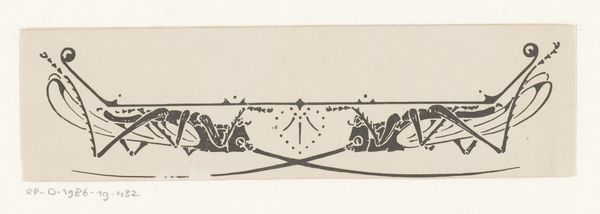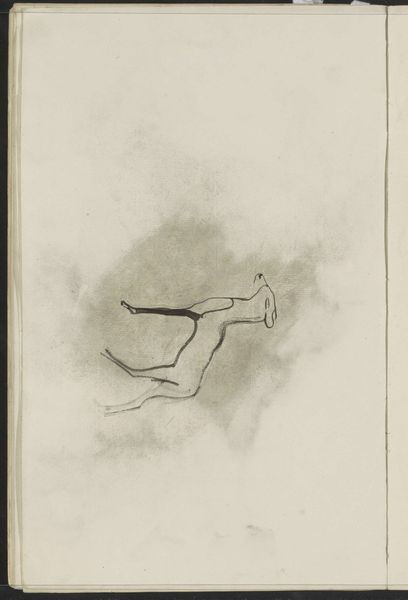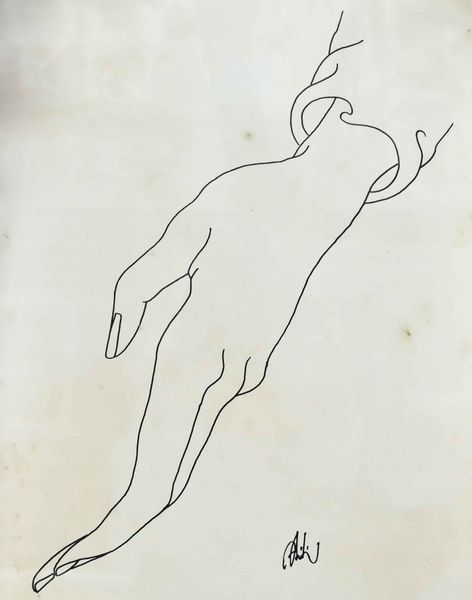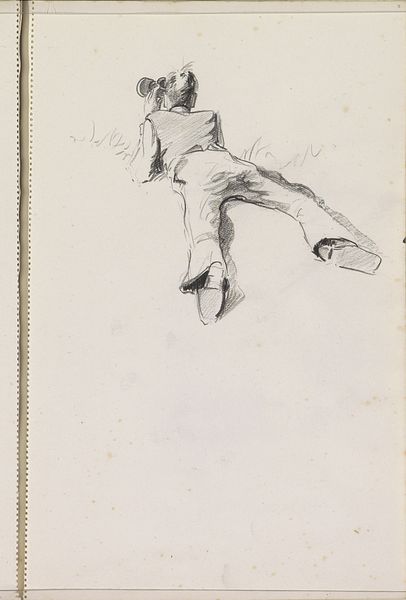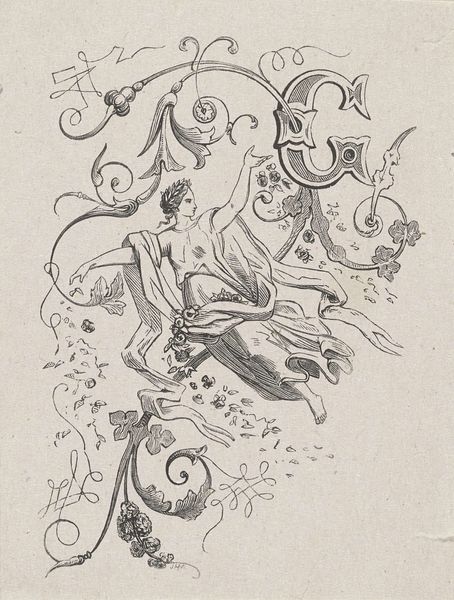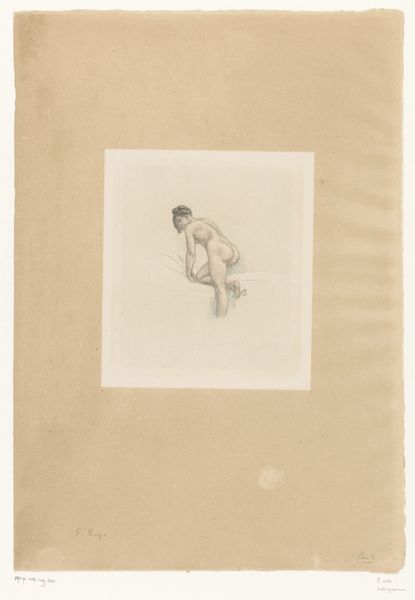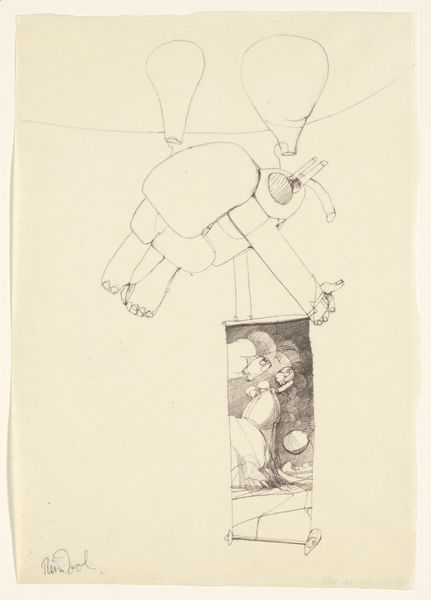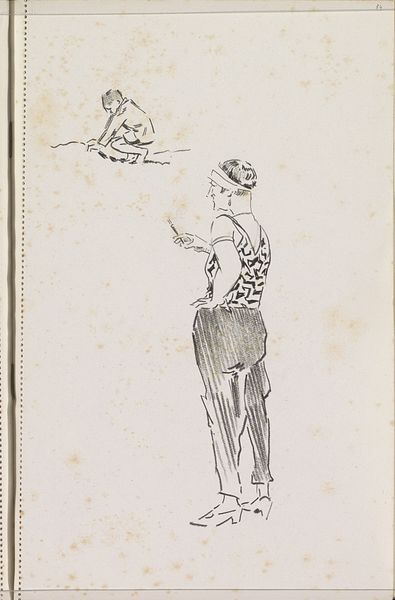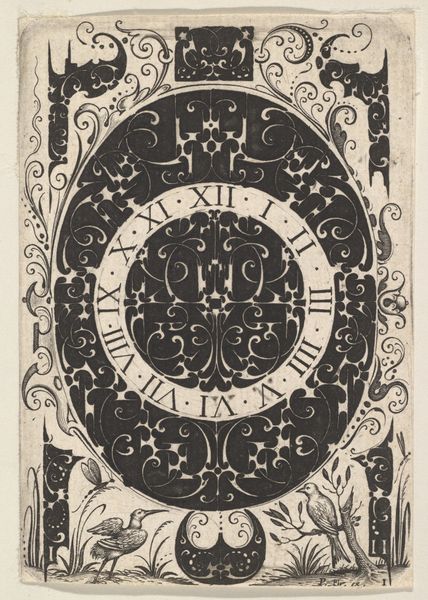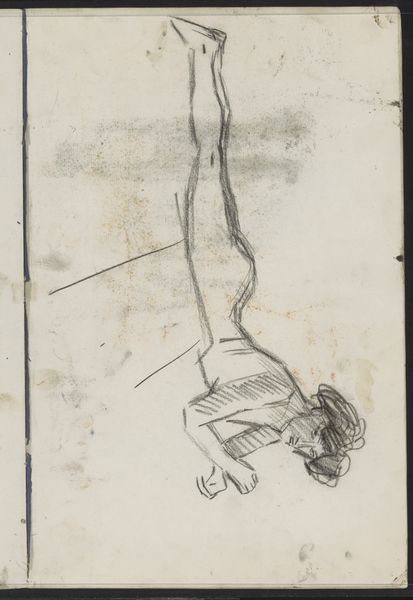
drawing, ink
#
drawing
#
ink
#
geometric
#
line
#
modernism
Dimensions: overall: 28.6 x 21 cm (11 1/4 x 8 1/4 in.) Original IAD Object: 43 1/4"high; 10 1/8"wide; 5 3/8"deep
Copyright: National Gallery of Art: CC0 1.0
Curator: There's a sense of stillness about this ink drawing; the clock face looms out of a blank space. Editor: Right. This is "Shelf Clock," crafted circa 1937 by Ulrich Fischer, using ink on paper. It presents a very stylized, modern rendering of a clock. There is a palpable feeling of the inevitability of time’s passage. The severe geometry of the lines suggests rigidity. Curator: Time is one of humanity’s earliest symbolic concepts. And the clock... it's such a potent reminder of the cyclical nature of existence. You see Roman numerals, points that connect the inner and outer circle…it almost becomes a mandorla form! Editor: Definitely a reflection of Modernism’s attempt to grasp at systems. Fischer renders time abstractly, turning a functional item into art, an idea deeply tied to mass production’s own reorganization of labor, time and space during that period. Did this object exist in the artist’s actual life, or in his conceptual one? Curator: I’m more drawn to the visual language itself. Consider the elaborate filigree of the hands against the otherwise spare design. The minute hand arches back gracefully towards the hour hand, a kind of visual conversation. And time is fluid, not static; that ornate flourish emphasizes the subjective experience. Editor: Yes, but even as a drawing on paper, the clock maintains its implied regulatory power. This feels heightened, really, as the viewer’s experience is distanced from a functioning clock while confronted with a meditation on time itself. What does it mean to render time static through image making? Curator: Perhaps it is not static at all. More a frozen moment, meant to evoke deeper contemplation than the tick-tock reality. And the contrast itself feels crucial, a dance between precision and adornment that's, to me, evocative of that same tension between control and surrender in our own lives. Editor: In any event, Fischer’s "Shelf Clock," offers more than just a depiction of timekeeping; it's an opening for conversation on the cultural impact of modern design, how even quotidian items can signify deeper structures of power. Curator: It's also a meditation on how we visualize and perceive temporality; how that affects cultural memory, and meaning.
Comments
No comments
Be the first to comment and join the conversation on the ultimate creative platform.
